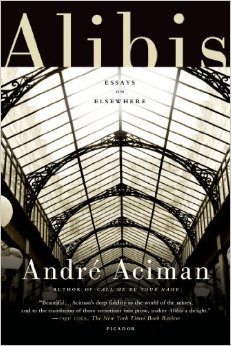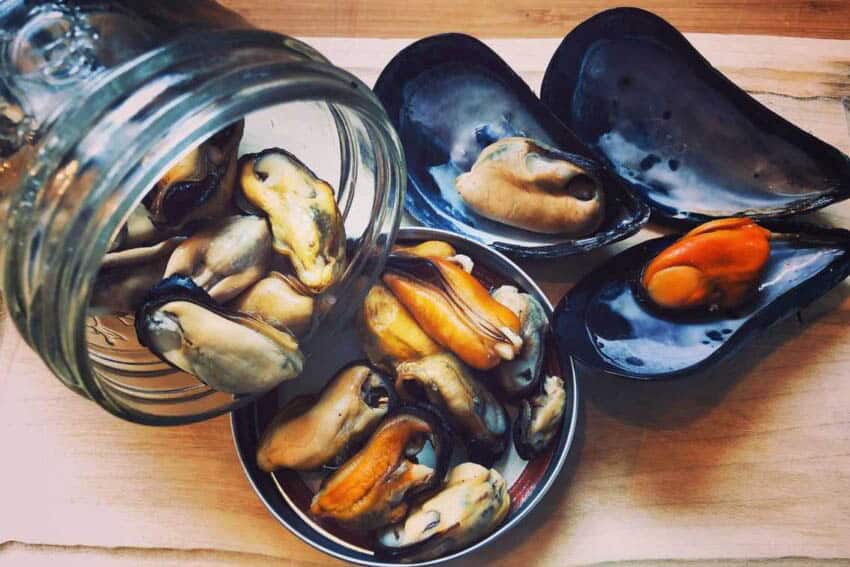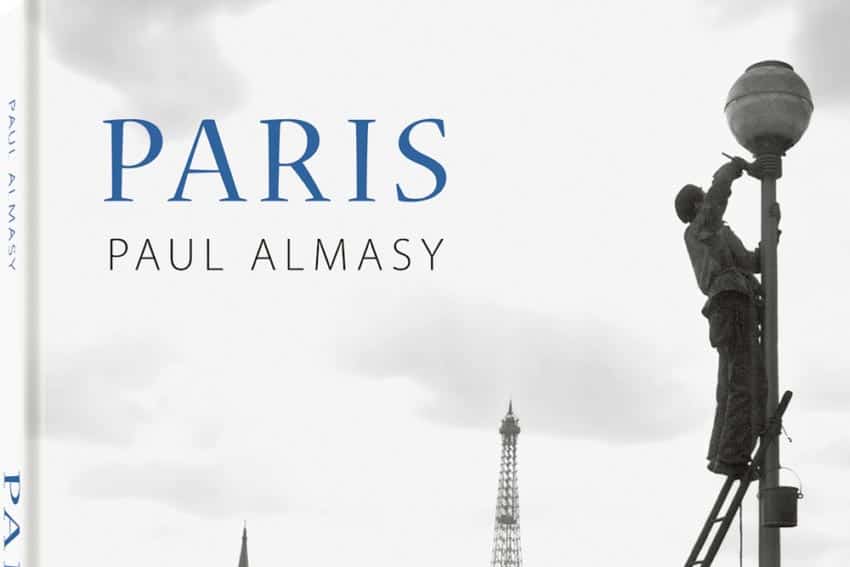Alibis, Essays on Elsewhere: An excerpt on Venice
By Margaret Gaby

André Aciman was born in Alexandria, Egypt and is the author of many fiction and nonfiction publications. He is the author of the Harvard Square, Eight White Nights, Call Me by Your Name, Out of Egypt, and False Papers. He is also editor of The Proust Project.
Aciman grew up in a multilingual and multinational family and attended English-language schools, first in Alexandria and later, after his family moved to Italy in 1965, in Rome. In 1968, Aciman’s family moved again, this time to New York City, where he graduated in 1973 from Lehman College. Aciman received his Ph.D. in Comparative Literature from Harvard University.
Aciman lives with his family in Manhattan while teaching comparative literature at the Graduate Center of the City University of New York
In his book, Alibis: Essays on Elsewhere, he writes a series of linked essays about time, space, identity and art. Aciman demonstrates the art of the personal essay. He expresses the essays through beautiful memories, elegiac meditations on the richly cultures of Barcelona, Rome, Paris and New York. He makes even the most ordinary street corners seem mysterious. In this excerpt he explores the canals of Venice, Italy.
The Sea and Remembrance: Venice
I had hopes of heading off to the Lido by way of the Grand Canal this afternoon, but the water taxi I hired at the railway station has taken a strange turn.
This will most likely spoil what I’ve been fantasizing about for months: taking in breathtaking views of all my favorite palazzi lining the city’s waterway on the Grand Canal, before passing St. Mark’s and then heading away from Venice at twice the speed toward the Lido. It’s a long and narrow island some twenty minutes from the city, the Lido faces Venice and its lagoon on the western side; on the eastern side, where Lido’s shoreline dips into the Adriatic Sea, are its magnificent beaches.
As we’re threading our intricate way through an unusually narrow canal not far from the train station, we keep slowing to negotiate rights of way–with another water taxi, with a gondola, and then with the large industrial barges stationed along the side of the canal that haul bags of cement, steel rods, and stone, even the rumbling debris of several buildings under renovation.
 I finally muster the courage to ask the driver how long he thinks our ride will take. But he is busy greeting friends on either side of a narrow bridge and doesn’t hear me. Not that he could if he tried: there’s too much going on–too many jackhammers, too much yelling.
I finally muster the courage to ask the driver how long he thinks our ride will take. But he is busy greeting friends on either side of a narrow bridge and doesn’t hear me. Not that he could if he tried: there’s too much going on–too many jackhammers, too much yelling.
Venice is re-gentrifying before my eyes. “Molto trendy,” someone had told me in Rome. “Venice is very trendy.” The word trendy is trendy this year–Italians are using it constantly, sometimes in the superlative: trendissimo. “You’ll have to be patient,” my taxi driver answers me at last.
A few more turns and I find myself totally lost. To counter my driver’s grimace and show it doesn’t faze me in the least, I affect the weary nonchalance appropriate to jet-lagged travelers arriving too late to argue with underlings. Not a good beginning. I don’t want to let my exchange in the water taxi spoil my arrival, but it has already dispelled the glistening Turner-Ruskin-Monet-Whistler moment I had choreographed for myself.
I am reminded of Gustav von Aschenbach, the stiff, fastidious, well-groomed, un-bohemian writer in Thomas Mann’s novella Death in Venice, who arrives in the city and is taken to the Lido not by vaporetto, as he requested, but by gondola: a minor altercation ensues between the incensed German tourist and the headstrong gondolier, until the passenger is finally persuaded that there is really nothing to do but sit quietly and wait till he reaches his destination.
In Luchino Visconti’s 1971 film adaptation of Mann’s novella, Aschenbach’s arrival in Venice is accompanied by Gustav Mahler’s Fifth Symphony, which is ideally suited to the occasion. Tension and premonition are brewing beneath, but on the surface is only most serene, unruffled strains of Mahler’s Adagietto stemming to Mann;s “splashing of the oar as the wave struck dull against the prow.”
Within moments, however, we’re on none other than the Grand Canal itself–which means that the lagoon is still quite a stretch away and we haven’t even reached St. Mark’s yet. Suddenly I experience both the joy of averting a confrontation with the driver and the absolute bliss of catching sight of an expanse of seawater I’ve given up hope of ever seeing again.
From here, even I could steer our way to the Lido. I am almost tempted to ask the driver to let me handle the wheel for a few seconds. But I’d better not. Better sit back and let this water city, like water cities, take its time and come to me.
Dash to the Nearest Beach
Water cities have a way of seducing us, though it’s always difficult to know why, and explanations vary with each city. Perhaps it’s the fact that when afternoons grow too hot and the air too thick, you can always turn your back on your day-to-day life, utter an exasperated “Enough with this,” pull out a bathing suit stashed somewhere in your desk, and dash off to he nearest beach.
Unlike in cities where beaches lie an hour from home, in Venice water is available before you ever long for it: the lines between work and play, downtown and resort town blur. Here, water is a part of life, of who you are, of everything you take for granted, of what you do, eat, smell. Water cities are like conditional, transient homes; they are our romance with the sea, with time, with space, with ourselves.
Marseille, Barcelona, Trieste, Istanbul–each romances the Mediterranean in its own fashion, mostly by embracing the sea in sweeping C-shaped bays that date back to antiquity. But none has gone beyond romance and literally consented to everlasting matrimony, as Venice has. Here, the nuptials of city and sea are celebrated each year on the Sunday after the Feast of the Ascension, when the doge of Venice throws a symbolic ring into the sea a short distance from Lido. Where the sea is, so is the city.
There is no spot in Venice where one can’t see the sea, or is not aware of it, or does not worry about it or respond to it. At dawn, a night, in winter and summer, and during the quieter hours of the afternoon, you can always hear the lazy slap of water lapping the stone walls of the canals, licking and ticking like the pulse of the city. As for the smell, it never goes away. Even in the morning, when fresh air is hauled in like produce from the mainland, the smell is there: between sea salt, marine growth, and diesel fuel, something brackish always hovers over Venice.
Standing Water
The smell is more pungent here than anything in Genoa, Naples, or Rimini, perhaps because Venice is all standing water: slushy, bilgy, dirty–an open sewer, some have remarked. The back alleys of Venice, narrow and grubby, spill easily into the canals, and many a time you can catch an elegant Venetian picking up his dog’s droppings in a newspaper, rolling up the contents, and the, instead of throwing them away in the many overstuffed rubbish bins along the city’s campi, tossing the little package with grandiloquent menefreghismo right into the Grand Canal.
The lavi sh palazzi lining the canal are no better. Although they may spell more opulence per square inch than anywhere in the world, and their ancient glass panels may shimmer–reminders that the one thing wealth likes best is to be stared at and envied–each is dangerously close to going under.
sh palazzi lining the canal are no better. Although they may spell more opulence per square inch than anywhere in the world, and their ancient glass panels may shimmer–reminders that the one thing wealth likes best is to be stared at and envied–each is dangerously close to going under.
Everything is so frail here. Palaces stand together like majestic old dowagers with rotting teeth and magnificent hairdos who do not fall partly because they’re learned to lean together for support but also because despite their squat, wizened forefronts, they possess the weary certainty of the aging rich who know that they’re not going anywhere.
You, however, are just passing through.
Buy this book on Amazon: Alibis: Essays on Elsewhere
- These 9 U.S. National Parks Require Reservations in 2024 - April 17, 2024
- Take a Hike in Olympic National Park - April 17, 2024
- The Wild Mississippi: 2340 Miles Across Ten States - April 8, 2024





